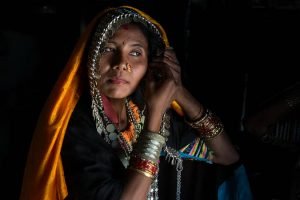The Evolution of Caste System Among the Rana Tharu: Unraveling Complexities and Progress
Introduction
The Rana Tharu community, nestled in the Terai region of Nepal, is rich in cultural heritage and history. Like many societies, the Rana Tharu community has had its own experiences with the caste system, a social structure that has evolved over time, shaping relationships, opportunities, and dynamics within the community. In this article, we delve into the complexities of the caste system among the Rana Tharu, examining its historical roots, changes, and the ongoing efforts to foster social equity and harmony.
Historical Origins
The caste system, a hierarchical division of society into distinct social classes, has historical roots in Nepal and has influenced various communities, including the Rana Tharu. It is important to recognize that the caste system’s origins predate the Rana Tharu’s presence in the region and have been influenced by factors such as migration, religion, and socio-economic interactions.
Caste Hierarchy
The caste system among the Rana Tharu traditionally consisted of various groups, each with specific roles and responsibilities. At the top of the hierarchy were the “Brahmins,” who held positions of religious authority. Next were the “Chhetris,” often associated with administrative and military roles. The “Dalits” or “untouchables” occupied a marginalized position, with limited access to resources and opportunities.
Social Dynamics and Progress
Over the years, societal changes and progressive efforts have contributed to shifts within the Rana Tharu caste system. Education, urbanization, and increased awareness have challenged traditional boundaries and hierarchies. As more individuals gain access to education and opportunities, they are breaking free from the constraints of the caste system, paving the way for social mobility and transformation.
Resilience and Unity
Despite the historical influence of the caste system, the Rana Tharu community has also demonstrated a strong sense of unity and resilience. Festivals, traditions, and cultural practices have played a crucial role in fostering a sense of belonging that transcends caste divisions. The community’s commitment to preserving its heritage while embracing positive changes is indicative of its determination to forge a more inclusive future.
Efforts Towards Equity
Contemporary efforts are focused on dismantling discriminatory practices and fostering inclusivity. Grassroots organizations, educational initiatives, and awareness campaigns aim to challenge stereotypes, promote social integration, and provide marginalized groups with equal access to opportunities.
Conclusion
The caste system within the Rana Tharu community reflects a complex interplay of historical factors, societal dynamics, and cultural norms. As the community navigates the journey towards social equity and unity, it is important to recognize both the challenges and the progress that have shaped its evolution. By embracing education, awareness, and collaboration, the Rana Tharu community is working towards a future where individuals are valued for their contributions rather than confined by their social backgrounds, a future that aligns with the spirit of unity and shared aspirations that define the Rana Tharu identity.







